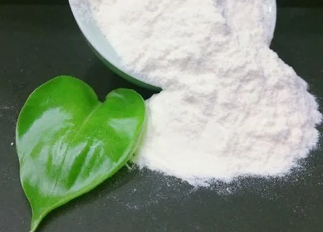HPMC cellulose is the abbreviation of Hydroxypropyl Methylcellulose, which is a synthetic derivative of cellulose. Cellulose is a natural polymer found in plant cell walls. HPMC has been chemically modified to introduce hydroxypropyl and methyl groups to improve its water solubility and other functional properties.
HPMC cellulose is usually a white or white-like powder. HPMC cellulose has good water solubility, which makes it very useful in a variety of applications that require water-based solutions or suspensions.
HPMC cellulose is known for its ability to regulate the viscosity of solutions and is therefore used as a thickening or gelling agent in the pharmaceutical and food industries.
HPMC cellulose can form transparent and flexible films, so it is often used in coating applications in the pharmaceutical and food industries to control drug release or protect food.
In food, HPMC cellulose is often used as a stabilizer and emulsifier to improve texture and prevent separation.
HPMC cellulose is commonly used in the construction industry, especially in cement-based products. It helps improve workability, water retention and adhesion of mortars and grouts.
In the pharmaceutical field, HPMC cellulose is used to prepare tablets as a binder, disintegrant and sustained-release agent.
HPMC cellulose is also found in cosmetics, especially in personal care products such as skin care and lotions, where it improves the texture and stability of the product.
HPMC is commonly used as a thickening agent, emulsifier, and stabilizer in pharmaceuticals, cosmetics, food products, and construction materials.
Generally, hydroxypropyl methylcellulose is considered safe for human consumption when used in accordance with regulations and guidelines set by relevant authorities such as the FDA (Food and Drug Administration) in the United States and other regulatory bodies worldwide. It is widely used in pharmaceuticals, food products, and dietary supplements.
In supplements, hydroxypropyl methylcellulose is often used as a vegetarian alternative to gelatin capsules. It serves as a capsule shell material, helping to encase and contain the active ingredients of the supplement. Additionally, it can act as a binder or disintegrant in tablet formulations, aiding in the release of active ingredients in the digestive system.
While hydroxypropyl methylcellulose is derived from cellulose, it is not considered a plastic in the same sense as synthetic polymers like polyethylene or polypropylene. HPMC is a semisynthetic polymer, and its chemical structure gives it properties that make it useful in various applications, such as its ability to form gels and provide viscosity in solutions.
Innovative Choice for Sustainable Building Materials- HPMC
[ 2023. 06. 27 ]
Read MoreApplication of HPMC in Building Materials
[ 2023. 06. 05 ]
Read MoreConstruction Fields HPMC
HPMC for eifs
HPMC for gypsum
HPMC for filler
Contact Us
Related Product
hpmc supplierHydroxypropyl Methylcellulose Uses In Constructionhydroxypropyl methylcellulose (hpmc) an overviewhydroxyethyl cellulose supplierscellulose manufacturersChina HPMChydroxyethyl cellulose in paintHPMCHow to make HPMC solutionDetergent Grade HPMC BlendingHPMC uses in pharmaceuticalsHPMC Usescellulose etherhpmc productsHydroxypropyl methylcellulose (HPMC) PriceGrades Of Hpmccellulose ether manufacturersHPMC Solubility Charthydroxypropyl methylcellulose (hpmc) powderOEM HPMCShijiazhuang Henggu Jianxin Cellulose Co., Ltd.
Chemical Industrial Park, Xinji City, Hebei Province, China Post Code: 052360
Copyright 2023 Shijiazhuang Henggu Jianxin Cellulose Co., Ltd. All Rights Reserved



